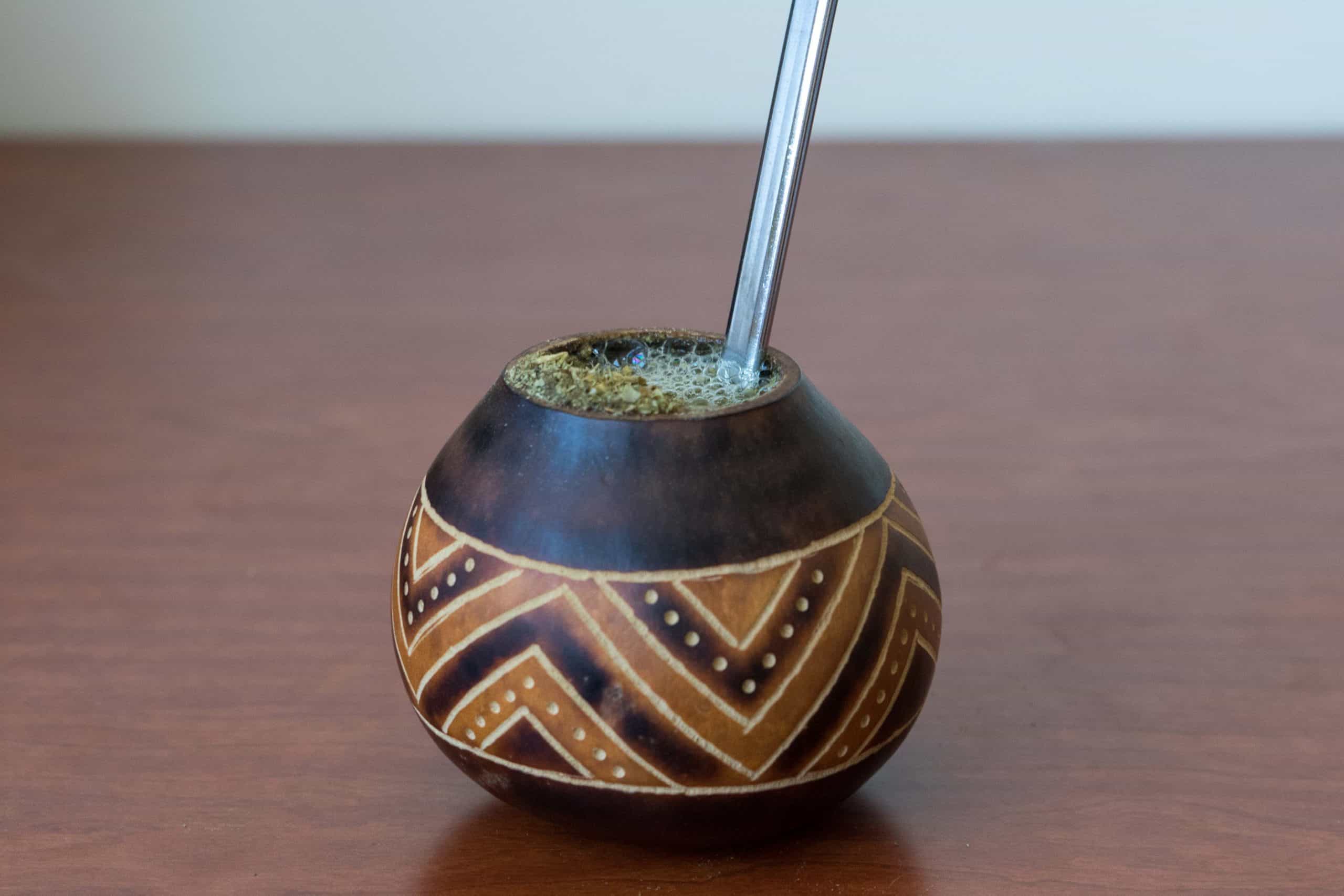Yerba Mate Tea is a popular herbal drink in South American countries like Argentina, Uruguay, Paraguay and Brazil. You may be wondering if its healthy to drink yerba mate daily. Or e.g. why are Argentineans so obsessed about drinking yerba mate? We’ll be answering these questions, and more, in this blogpost.
Contents
What is Yerba Mate Tea?
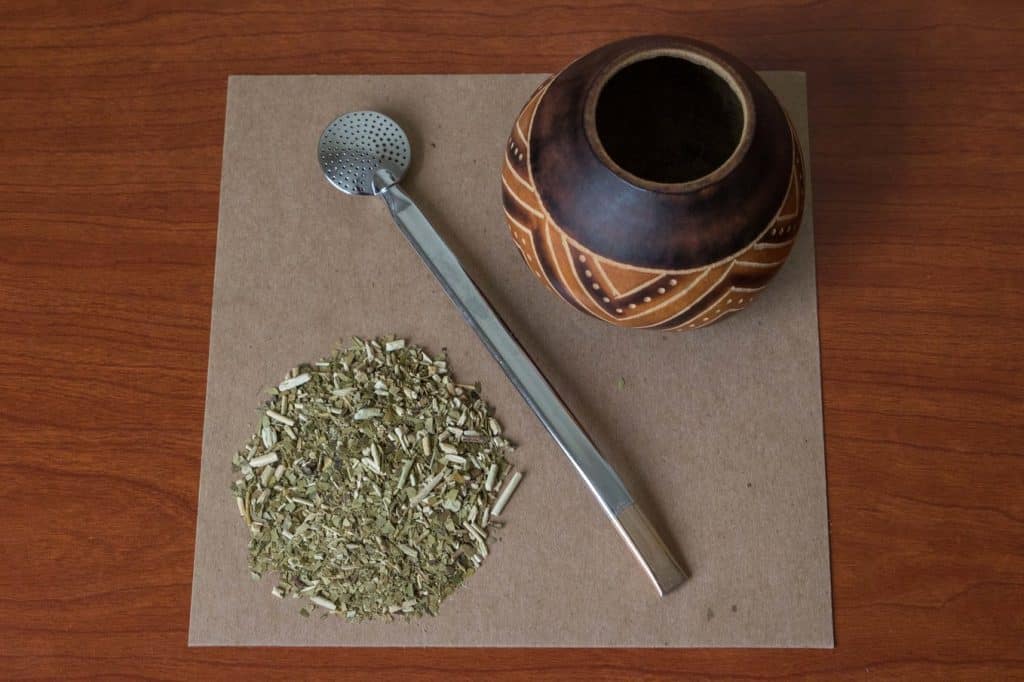
Pronounced “Yer-bah Mah-tay,” the literal translation is as follows: Yerba is a Spanish word which translates to “herb”. While Mate is derived from a native indigenous word (“mati”) referring to a drinking vessel, namely the Mate Gourd.
This South American drink traditionally comprises three parts:
- Squash gourd (about the size of a baseball), dried, with the fleshy bits and seeds taken out.
- The Metal straw (which filters the herbs) known as a bombilla.
- Yerba Mate “tea” leaves.
To make the tea, first you place the leaves into the gourd along with the bombilla. Second, you fill it with hot (but not boiling) water. Third, drink and enjoy. Salud!
To put things in scale, mate to Argentinians is like coffee to Americans. If you walk down the streets of Argentina, you can spot people holding their “mate” in one hand, and a thermos of hot water tucked under their arm as they make their way down the road.
Before we go any further, let’s clarify one more thing. The Yerba mate herb itself isn’t typically classified as a “tea”, as tea refers to the plant species Camellia Sinensis (black tea, green tea, and white tea). Instead, Yerba Mate comes from the species Ilex Paraguariensis, which is a member of the “Holly” family.
Yerba Mate Benefits
The reason Yerba Mate is so popular with South Americans lies in the chemical compounds within the plant, as it contains various stimulants. This includes a relative to the familiar caffeine, namely “mateine”, but also theobromine and theophylline. These work together to create a similar chemistry boost to which you’d experience with chocolate. A cup of Mate contains the same amount of caffeine as coffee (“mateine“), but without the jitters or crashes afterwards.
Mate is also rich in anti-oxidants such as vitamins A, B (1-5), C, and E, as well as minerals including iron, magnesium, manganese, phosphorus, selenium, and zinc. Thus it has an anti-cancer and anti-inflammation effect.
Other health components include saponins and adaptogens. Saponins are an important component found in adaptogenic plants. “Adapt” is the key word here, both within the plants themselves and for what they can do for the body. Adaptogenic plants grow in harsh environments and if presented with stress, adapt and continue to thrive. When adaptogens are assimilated by the body, you may experience an increased ability to deal with stressors.
Further benefits to Yerba Mate include:
- It helps with weight loss. Yerba Mate can promote thermogenesis (thus boosting metabolism). However, drinking the tea, without complementing it with a healthy diet and regular exercise, won’t get you in great shape by itself.
- Mate improves digestion (partly due to increased bile flow).
- As a diuretic, it assists the body to eliminate excess salt and fluids.
- It can assist in preventing diabetes.
- Improves heart health – Mate helps lower bad cholesterol while raising good cholesterol.
- Mate boosts your immune system.
- Thanks to stimulant ingredients, it can help with feeling alert, calm, clear-headed and focused.
Any Health Concerns With Mate?
To answer the question posed in the first paragraph, you can drink yerba mate daily. The tea itself is safe to drink, and healthy. The only caveat is to avoid boiling hot water. Instead, turn off the kettle before the heavy boiling commences. In Argentina, kettles have a special yerba mate setting to keep the temperature of the water at between 70 to 80 degrees Celsius. The main reason for this is that boiling hot water can harm the taste of the mate, while also destroying some nutrients. Moreover, there is also a tiny possibility of throat cancer if you drink yerba mate daily with boiling hot water. Not due to the mate tea itself, but instead, due to harm from the boiling hot water. This is another good reason to keep the water in the above-mentioned temperature range.
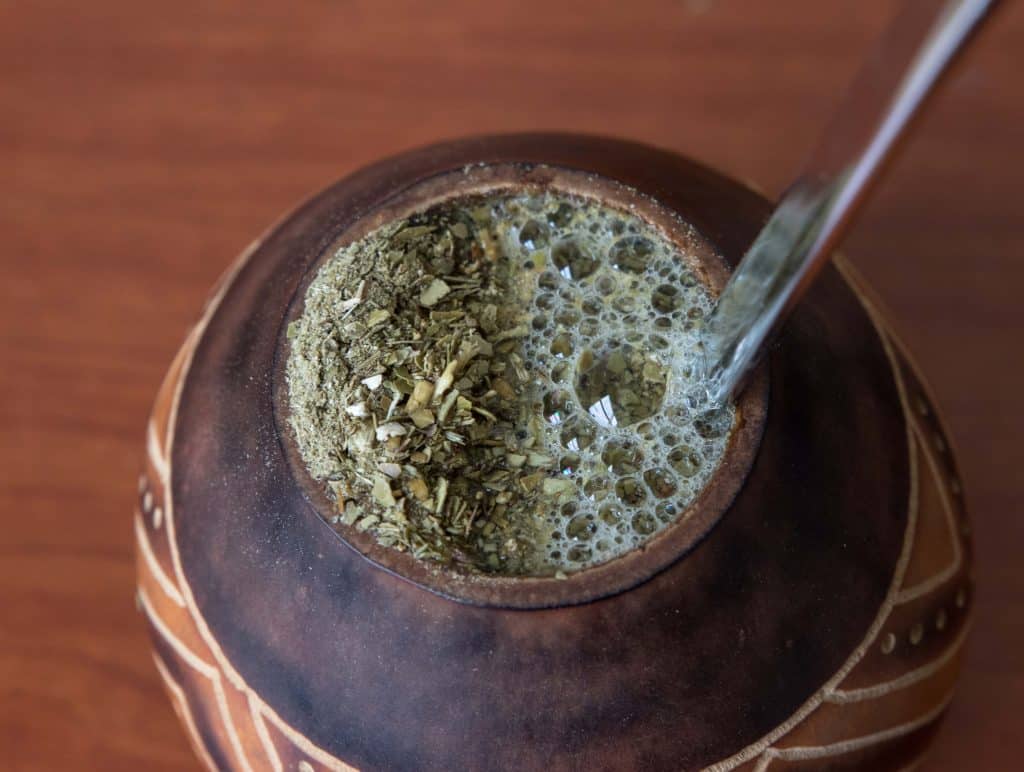
Styles of Yerba Mate
Argentina, Paraguay, Uruguay, and Brazil all love their mate, and each has their own style of cut. If you break down the components of a mate’s “cut”, you have the leaves (hojas), the stems (palos) and the powder (polvo.)
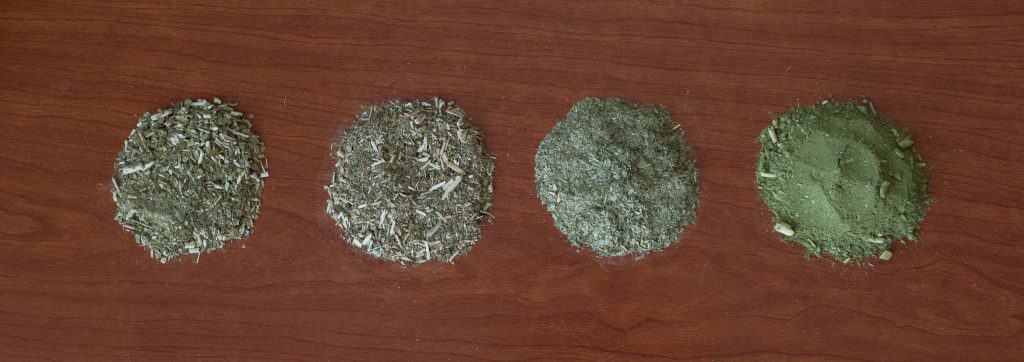
Argentina’s cut (below) is what you find in the more popular brands. It has an even balance of each of the components, leaving the flavor profile a balanced mix of grassy, woody, and herbaceous notes. Popular brands of this style are Rosamonte, Taragui, and Cruz de Malta.
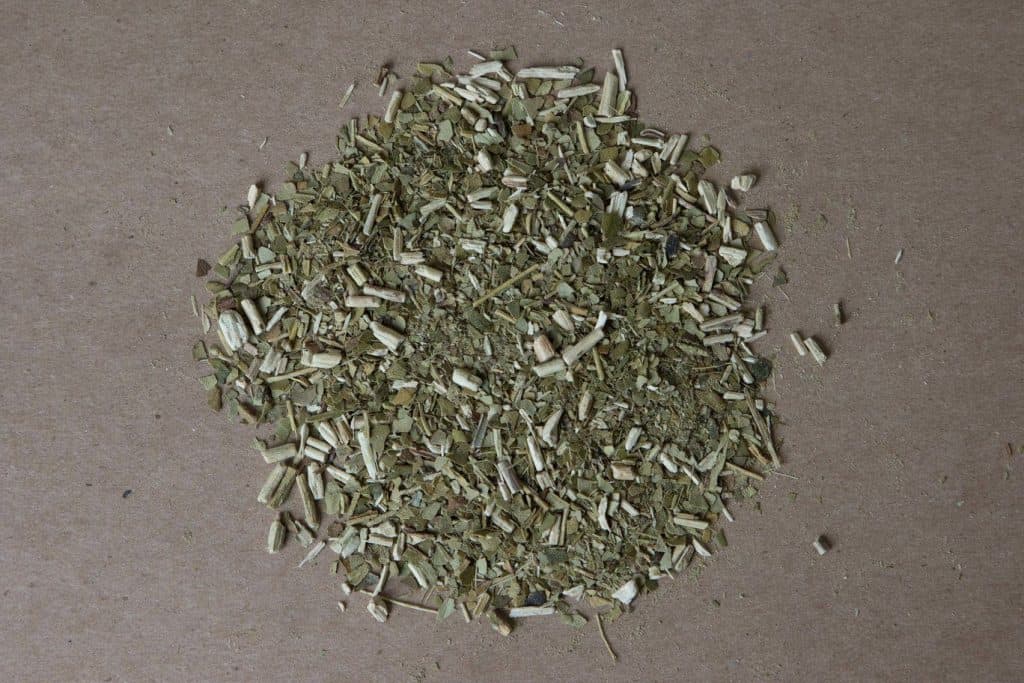
Paraguay is the middle-ground cut between Argentinian and Uruguayan styles. It has smaller cut leaves, even amount of stems, and more powder than the Argentinian style. Popular brands are La Rubia, Kurupi and Pajarito.
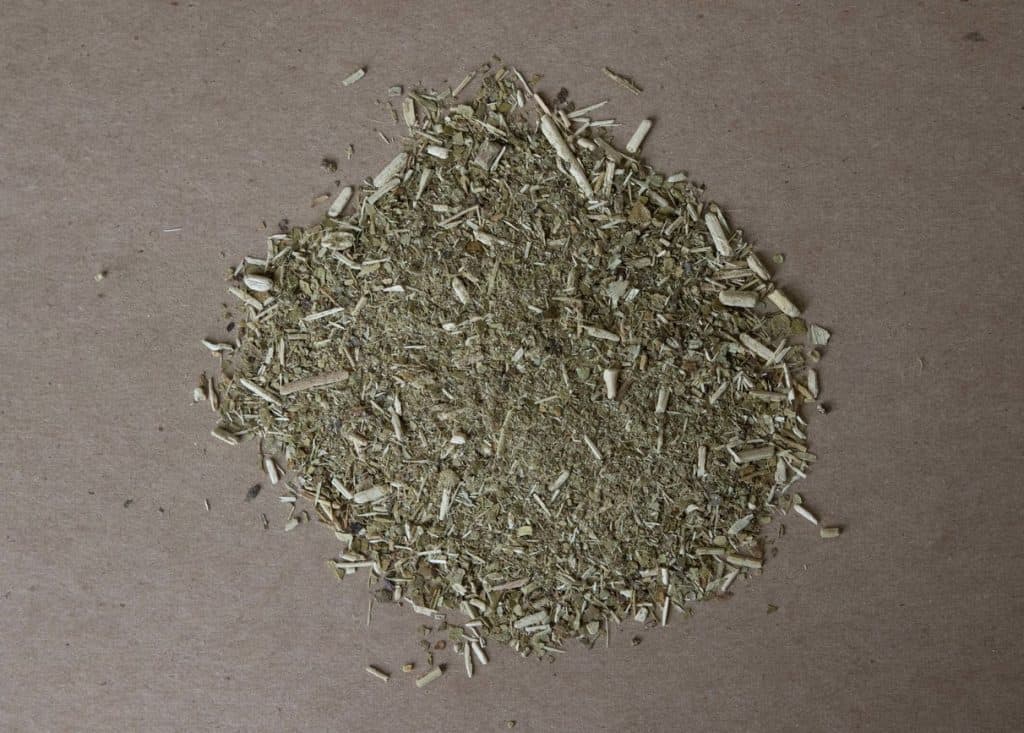
In Uruguay it is almost completely powdered, with some fragments of leaves and stems. The look and taste of their style differs greatly from the above two cuts, as it is bolder, rich, and slightly creamy. Canarias and Del Cebador are popular brands from Uruguay.
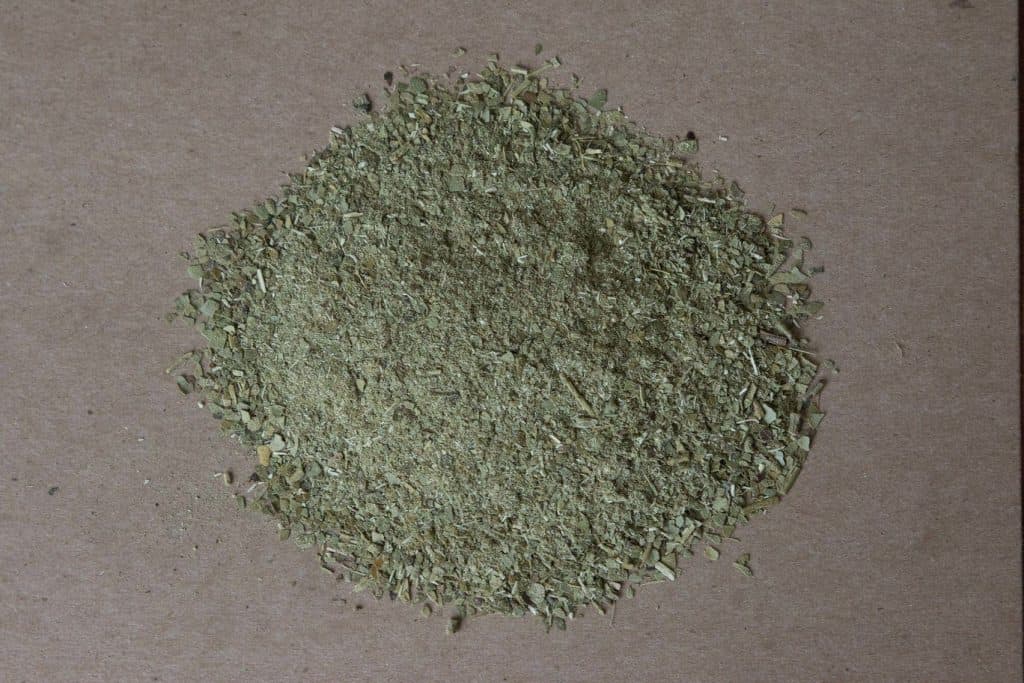
Brazil’s mate is made in a completely unique way. The previous “cuts” mentioned go through an aging process of 12 months or more, whereas, the Brazilian cut does not. Known as chimarrão, it is a brilliant, fresh, green mixture of powder and stems. The taste is far more herby, grassy and creamier than the previous blends. Brazil even drinks their mate out of a slightly different gourd, typically it is bigger with a large lip. Popular brands there are Ximango and Barao.
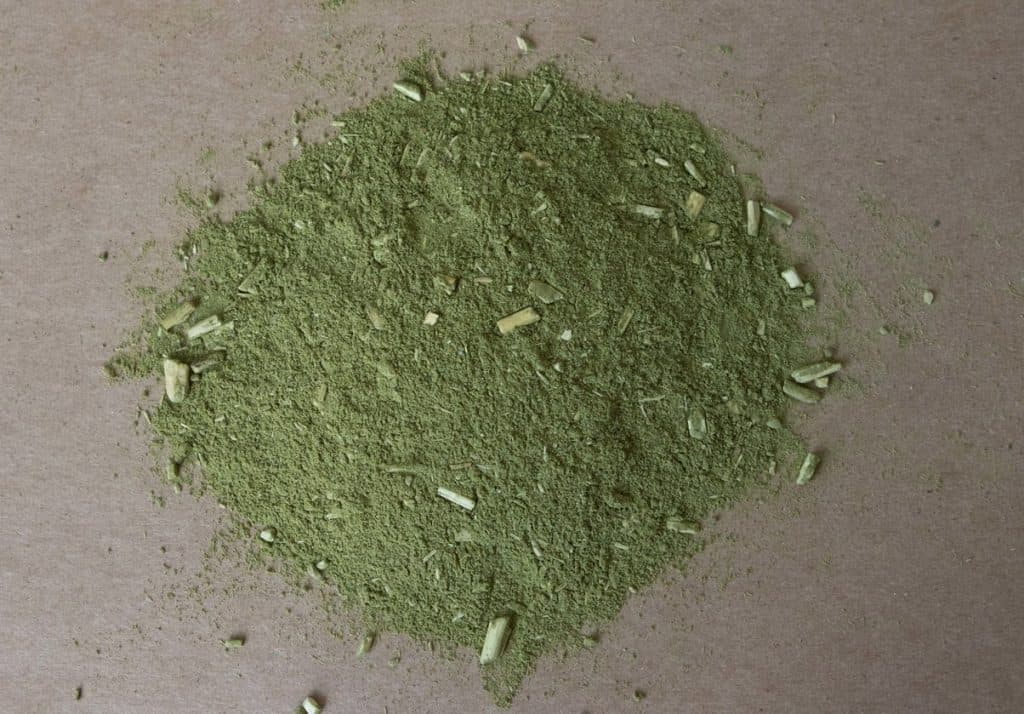
For more info, check out the video below on youtube, where I demonstrate in greater depth, some of the differences between yerba mate from these four different countries.
The Quality of Yerba Mate
Like all plant products, the conditions that the mate plants grow in will determine the overall quality. In the old growth forests of South America, you can find yerba mate growing in the shade of the taller, older trees. They symbiotically exist with all the surrounding plants, and the leaves are lush, healthy, and deep green. There are select few vendors who keep and support this old forest growth, sustainably harvesting from these trees to provide a higher quality product. These vendors section off areas of forest, promoting its health and protecting it from deforestation.
Unfortunately, most popular brands don’t grow or harvest like this. Typically, with big-name brands, yerba mate is mono-cropped, without shade, and without the support of the forest’s balanced ecosystem. Though commercial brands are grown inorganically in these less than ideal conditions, they are very affordable. An entire kilogram of commercially grown mate can range from $12 to 25 US dollars. If you drink one gourd every single day, this will last you about a month.
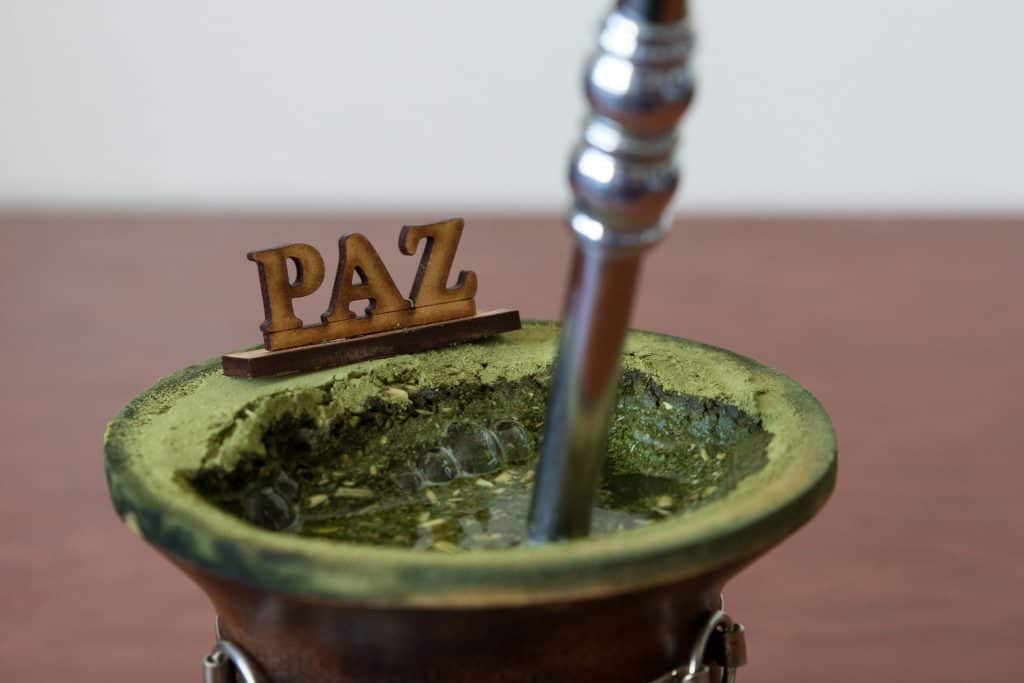
Whether or not you pay much attention to organic vs inorganic, there is one thing to keep in mind. Depending on where it was grown and the conditions the plant matured in, yerba mate can develop deep and complex tones and flavors. This, along with the various methods of processing and aging, leads to a large variety of flavor experiences.
If you’re curious about giving yerba mate a shot, make sure you try a few brands before you decide whether you like it or not. If you find yourself enjoying the deep complex flavors, the stimulation, and the feeling of your body getting flushed with vital nutrients, you are in for a herbal journey of a lifetime.
Yerba Mate Gear
Lets get deeper into what gear you need to drink yerba mate.
Yerba Mate Gourds
Unless you want to appear like a very obvious tourist or outsider by drinking yerba mate out of a regular coffee mug, you need a mate gourd. These gourds come in a variety of different forms. For example:
- Stainless steel
- Traditional squash gourd
- Wood (sometimes covered in leather)
- Plastic e.g. single-use plastic mate gourds sold at Supermarkets in Argentina
- Silicone
- Ceramic (these ones will break if they fall)
There’s continuously new Mate Gourd innovations on the market.
Paraguay Terere Gourds
Some of these gourds are meant for the hot yerba mate tea, while others are better suited for the cold terere mate drink of Paraguay. Their terere “gourd” actually looks and feels more like a glass, often made out of wood or steel (in which case it’s covered with leather). I prefer the wood terere gourds, its a very natural and authentic way of drinking cold mate. But stainless steel is also nice, as it keeps the cold within the drink longer, than for example, glass.
Argentina Gourds
On the other hand, in Argentina the mate gourds tend to be smaller than in Uruguay.
I own both an Uruguayan and Brazilian mate gourd. Because I prefer to add more tea to the cup, and don’t want a small serving of yerba mate. But, especially women generally prefer the small Argentinian gourds. In cities like Cordoba, you’ll notice girls sitting outside in the park in the afternoon, drinking mate out of these small gourds with friends.
Uruguayan Mate Gourds
Uruguayan mate gourds are typically made of wood, covered with leather. The tip of the gourd often protrudes inward.
Brazilian Chimarrao Gourds
While in Brazil, the top of the gourd opens up outward allowing for more water to be poured inside. It also has a smaller opening, to keep the fine green mate powder inside.
In Brazil, you sometimes get these huge Chimarrao gourds. Its large for a reason, as Brazilians love passing these wooden cups around in a circle. The larger the gourds, the longer it can be passed around, while keeping strong flavor.
Yerba Mate Bombilla
Bombilla is the straw you use to drink mate. For warm mate tea, the straw is made out of steel. But for the cold tea of Paraguay, it’s very often a wood straw. You could either buy the larger straw sizes (for men), or the smaller straws, often preferred by women.
On Amazon you get a free bombilla when you buy a very durable mate gourd. For example, I can recommend this stainless steel Mate Gourd, which includes a bombilla, at a great price on Amazon. It’s available in 5 different colors.
Otherwise, a nice tip is to negotiate a free metal straw with a street vendor in South America, whenever you buy a new mate gourd.
Yerba Mate Thermal Flask (“Thermos”)
You’ll need a thermal flask as well for drinking yerba mate. This is to keep the water either hot or cold (ice cold water = terere). Generic thermal flasks are easy to find in supermarkets, since it can be used for a lot of other purposes than only drinking yerba mate. However, these are not custom made for yerba mate, like this one below (which I own myself since I’ve tested a lot of different thermos, and I prefer this design). Here’s the Amazon link to check out the current price.
I recommend buying a durable flask like above, and not only the cheapest you can find. For example, with some cheap flasks, if they fall on the ground, it’ll break immediately. Similarly the top water pouring mechanism is often inconvenient in cheap flasks. For example, when you need to screw it open, as opposed to only flipping up the pouring mechanism… Lastly, some basic flasks don’t keep the heat inside, if you fill it with hot water, the flask becomes too hot to handle as well. These flasks are only suited to keeping water cold.
Yerba Mate Carry Bag
Especially if you often travel, having a yerba mate carry bag is quite convenient. It has pouches to put all the Mate gear along with a stash of tea in the same place. In Uruguay, you also see locals walking around with these carry bags outside all day. Its usually made out of leather. Actually mostly cheap fake leather. But I’m sure you’ll find genuine leather if you go look for it.
Yerba Mate Around The World
The most avid yerba mate drinkers outside of Latin America, are the Syrians in the Middle-East, and the Polish in Europe. In Germany they drink the iced tea variant of yerba mate, but the Polish drink it the traditional authentic way. In Poland, they import the tea from South America, but then use their own packaging and brand names. There’s one or two really good organic Mate brands (such as in the photo below), but 80% of the mate varieties over there contain flavorants.
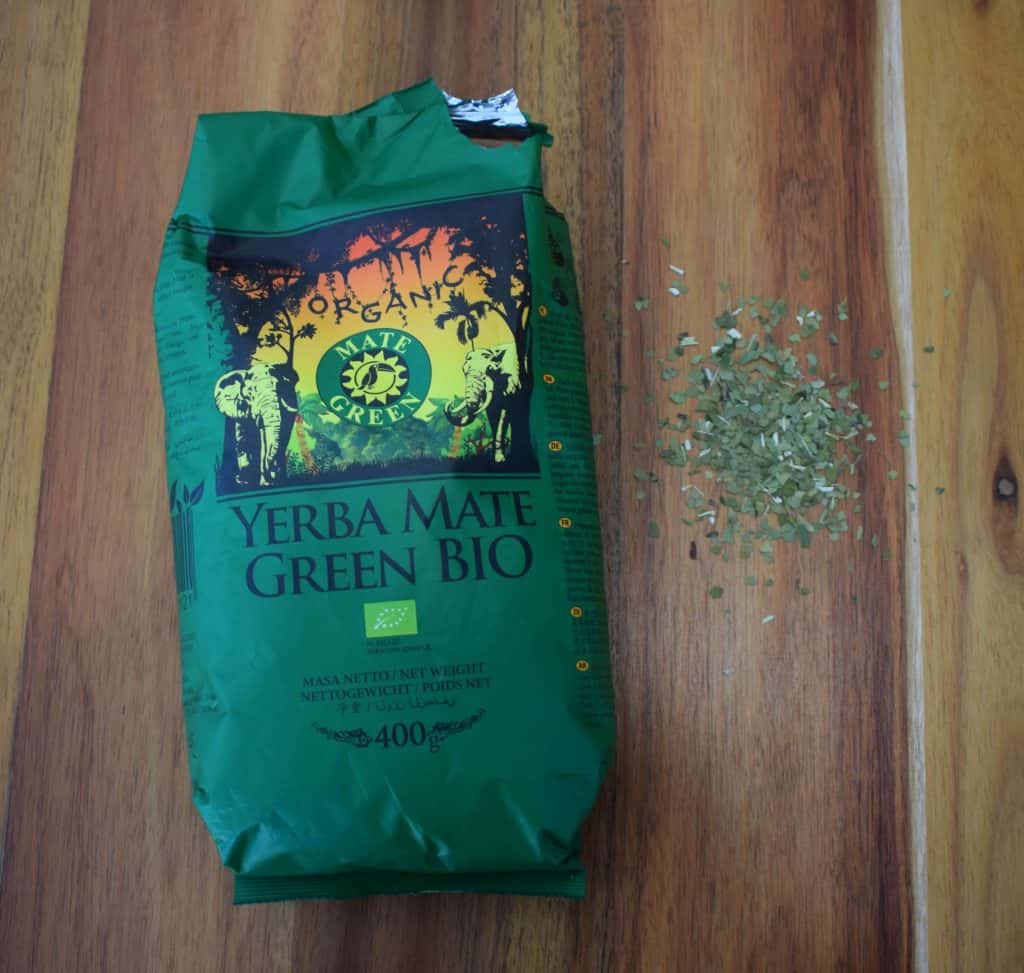
The above organic, wild-harvested Polish mate has a relatively smooth taste. It’s a mix of stems and leaves, provides clean energy and isn’t powdery – thus won’t clog up your bombilla.
Flavored Yerba Mate
For health reasons I avoid added artificial flavorants. If they add e.g. lemon peel, lemon verbena herb, or real dried lemon, I’ll drink it anytime. But if lemon flavoring is sprayed on the herb, its not a completely natural product anymore, and loses its appeal as a health drink.
In the past, after drinking flavored mate all day in Latin America, I’ve noticed a throat irritation appear after a few days (due to the chemical flavorants). Over the years, I’ve tried some really weird Mate flavors e.g. bubblegum, kiwi, cherry, peach or tutti frutti. But I usually end up throwing it away, as nothing beats the real authentic mate, as the Matero’s themselves would drink it …100% natural (if you’re up for the bitter acquired taste).
Where To Buy Yerba Mate
Almost every country I’ve been to had at least one small shop selling yerba mate. I usually do an online search such as: “Buy Yerba Mate in [city name]”. In foreign countries you can’t pick and choose the exact brand you want. But, at least you have more options than buying online. Yerba Mate is sold in places like Israel, Rome, Amsterdam, Frankfurt, Barcelona, Miami, Tokyo …get the idea – basically any large city.
Buy Yerba Mate Online
If you still can’t find yerba mate locally wherever you live, don’t fret. It’s easy to buy organic Yerba Mate Online from I-Herb – the world’s leading online health store with affordable delivery. Click to be redirected to I-Herb for the latest price on their top-selling Yerba Mate tea. Although it’s obviously more expensive than buying local Mate in Argentina, I-Herb’s prices are still very competitive considering they import it from South America.
If you prefer ordering with Amazon, get a genuine Argentine Brand of Yerba Mate like Cruz de Malta (check for current price).
More Yerba Mate Tips
How Much Yerba Mate Tea Should you Drink?
Basically, one mate herb-filled gourd per day is perfecto. Also, fill up a 1 liter thermal flask with hot water. This serving can sometimes last from morning to early-afternoon (depending how fast, or slow, you drink). Although, the mate’s flavor will start disappearing after 5 to 10 refills.
I do not recommend drinking yerba mate in the evening or at night. As this can lead to insomnia and make it more difficult to fall asleep at night. A thoughtful recommendation, out of my own personal experience, would be to avoid yerba mate for a minimum 6 hours before bedtime. Thus if you want to fall asleep at 11pm, then the last sip should definitely be 5pm (or earlier).
If you still have a flavorful gourd of mate herbs left at around 5 pm, sip all the remaining tea water out. Then place the herbs in the gourd in the refrigerator overnight, until the next morning. The cold temperature in the fridge will stop bacteria from growing in your mate tea. However, if you leave the tea standing outside overnight, a sore throat or other health problems are very likely if you drink the same herbs the next day.
Which Herbs can you Add to Yerba Mate?
It depends solely on which herbs are available in your country. Mint is the most popular Mate herb, which you can find almost anywhere. Add either fresh mint leaves, which is obviously best (as it contains more nutrients), or otherwise dried mint. In my own herbal drawer, I have options like Boldo, Spearmint, Peppermint, Cinnamon sticks, Melissa herb, Lemon verbena, Rooibos tea, Gingko Biloba, and Ginger root. Any of these will complement your cup of Yerba Mate quite well.
Of course, many Yerba Mate tea brands come ready-made with herbs already added in the packaging.
Moreover, you can’t go wrong experimenting by adding fresh or frozen fruits such as pineapple, a lemon slice or even blueberries to your yerba mate tea.
Yerba Mate Conclusion
As you can see, there’s a lot more to yerba mate than most other teas. Still, its not everyone’s cup of tea. Some hate the bitter taste. Others love it for the same reason. But one thing is certain, if you drink the pure herb, no sugar, and no additives, then it surely is one of the healthiest drinks around. On par with Green tea, Guayusa, Rooibos (“Red Bush”), Black Tea, White Tea, you name it.
Next time, before grabbing another coffee, check out the links above. Then consider a different kind of high than your daily cuppa Joe. Yerba Mate mostly appeals to the health-conscious consumers. If you eat junkfood daily, with milkshakes and highly-processed juices or sodas, then your taste buds might not be well enough developed yet to enjoy Yerba Mate. But otherwise, give it a shot, and let us know how it was in the comment section!
If you don’t yet own any yerba mate gear, check out this blogpost and youtube short where I brew a cup of yerba mate tea in a french press!
Share the link to this post with your friends, and post below any further questions you may have about yerba mate tea!

